Georgios Panagopoulos MD | Orthopaedic Surgeon

H ασβεστοποιός τενοντίτιδα οφείλεται στην εναπόθεση αλάτων ασβεστίου στους τένοντες του στροφικού πετάλου. Είναι μία σχετικά συχνή και ιδιαίτερα επώδυνη πάθηση. Αν και η συντηρητική θεραπεία είναι συνήθως αποτελεσματική, ενίοτε μπορεί να χρειαστεί αρθροσκόπηση ώμου προκειμένου να αφαιρεθούν οι ασβεστώσεις.
Table of contents
What is calcific tendonitis?
H ασβεστοποιός τενοντίτιδα ώμου (συχνά αναφέρεται από τους ασθενείς ως ασβέστωμα ώμου ή ασβέστωση ώμου) οφείλεται στην εναπόθεση αλάτων ασβεστίου στους τένοντες του στροφικού πετάλου. Είναι μία σχετικά συχνή και ιδιαίτερα επώδυνη πάθηση.
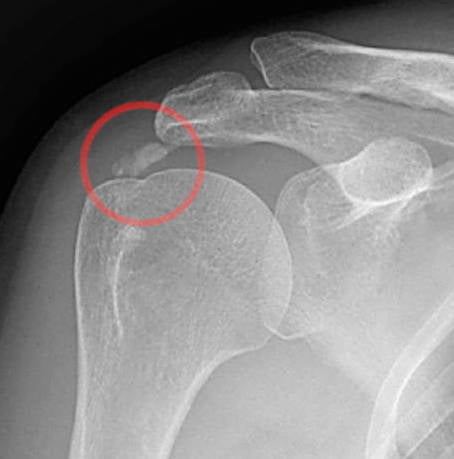
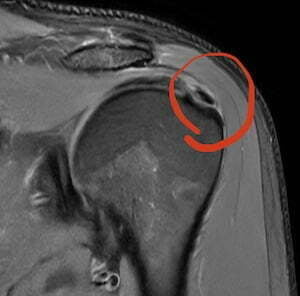
What causes calcific tendonitis?
Even though there are some theories, the cause of calcific tendonitis remains unclear. Conditions such as diabetes or thyroid disease have been implicated as risk factors. Supraspinatus is more commonly affected.
What are the symptoms of calcific tendonitis?
Symptoms may include:
- Sudden shoulder pain at rest
- Pain that wakes you up in the middle of the night, disturbing your sleep
- Patients may be startled so much by the pain, so as to seek urgent medical attention
- Stiffness and reduced range of movement

Diagnosis
Dr Panagopoulos will take a detailed history and perform a physical exam. X-rays are usually enough to confirm the diagnosis. Ultrasound may be useful to quantify the extent of the disease or used for ultrasound-guided needle lavage. MRI may help assess for concomitant pathology in cases of refractory pain.
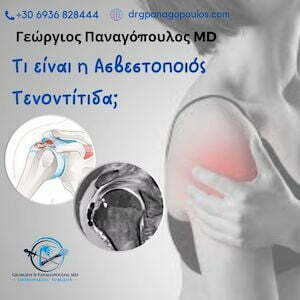

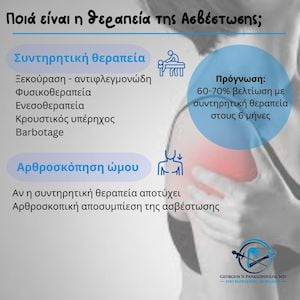
Conservative treatment
Treatment typically begins with a trial of conservative management which may include:
- Rest
- Activity modification
- Physical therapy/home exercise program
- Steroid injection(s)
- Shock wave therapy
- Ultrasound-guided needle lavage or barbotage
Surgical Treatment
If conservative management fails, surgery is the next step in treatment, with arthroscopic decompression of the calcific deposit. This is a day procedure. You can go home the same day if you wish. Surgery is performed arthroscopically. It involves finding the calcium deposit and scooping it out with arthroscopic instruments or a needle. It also typically includes a subacromial decompression or acromioplasty, which involves shaving-contouring your acromion to increase the space available underneath for your rotator cuff.

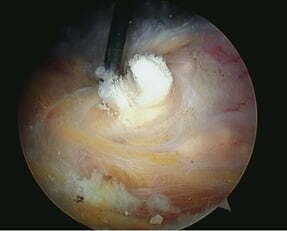
Other shoulder problems, such as biceps tendon problems or cuff tears can be diagnosed and treated at the same time. Your arm will be placed in a sling for some time, based on the amount of arthroscopic work that was undertaken. You will start physical therapy. Recovery may take 6-8 weeks.
FAQs - Frequently Asked Questions
What is calcific tendonitis?
Calcific tendonitis occurs when calcium deposits build up in the tendons and muscles of the rotator cuff.
What causes calcific tendonitis?
Cause remains unclear.
What are the symptoms?
– Intense pain that might wake you up at night
– Inability to raise arm and perform activities of daily living
What's the treatment?
– Observation
– Physical therapy
– Steroid injection
– Shoulder arthroscopy
Ασβεστοποιός τενοντίτιδα ώμου ασκήσεις
Μετά την πάροδο της οξείας φάσης και εφόσον το επιτρέπει ο πόνος, μπορούμε να ξεκινήσουμε ήπιες ασκήσεις ενδυνάμωσης με ασφάλεια.
Ασβεστοποιός τενοντίτιδα ώμου και διατροφή
Είναι μύθος ότι η ασβεστοποιός τενοντίτιδα σχετίζεται με αυξημένη πρόσληψη ασβεστίου. Μία ισορροπημένη δίαιτα είναι πάντα επωφελής.
Η ασβεστοποιός τενοντίτιδα χρειάζεται πάντα χειρουργείο?
Όχι, η πάθηση είναι συνήθως αυτοπεριοριζόμενη και σπάνια χρειάζεται χειρουργείο, εφόσον οι υπόλοιπες θεραπευτικές επιλογές έχουν αποτύχει. Είναι μύθος ότι το ασβέστωμα “πετρώνει” αν δεν το βγάλουμε γρήγορα.
Find us
Book an appointment with us today
